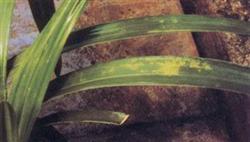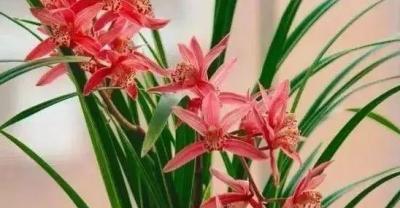Saprophytic Learn more about Saprophytic
-
What are the efficacy and effects of saprophytic fungus Agaricus blazei Murrill? What is the best thing to make soup with?

Agaricus blazei Murrill, also known as Agaricus blazei and Agaricus blazei, is a saprophytic fungus growing on livestock dung grassland. it is widely eaten because of its high nutritional value, rich in a variety of amino acids, hematopoiesis and immunity enhancement. What are the effects and effects of Agaricus blazei Murrill? And what?
2020-11-09 Saprophytic fungus Tricholoma matsutake efficacy and effect have what -
Edible fungus saprophytic tyroid mite

Tyrophagusputrescentiae belongs to the genus of acaridae, which is distributed all over the country. The main results are as follows: (1) the mite is one of the most harmful mites of edible fungi, which often occurs in mushroom bottle, mushroom bed, mushroom block, straw mushroom and Pleurotus ostreatus, especially in rice straw, cottonseed hull, barnyard manure and other edible mushroom cultivation materials, especially in wet environment. After the edible fungus hyphae is eaten, it breaks and tends to age and decay gradually.
2019-01-15 -
The growth pattern of orchids

The growth pattern of orchids
2018-05-04 -
Match breeding materials according to local conditions

Match breeding materials according to local conditions
2018-05-06 -
Six precautions for the introduction of volvariella volvacea in midsummer

Straw mushroom, also known as orchid mushroom, is one of the more common fungus varieties cultivated in China. Straw mushroom contains Vc and many kinds of amino acids, which is rich in nutrition and unique in flavor. It is a variety with short production cycle, quick effect, low investment and high benefit. In the hot summer, fresh mushroom varieties are rare in the market, and straw mushrooms can not only adjust the supply of off-season mushrooms in the market to meet the growing needs of people, but also export to earn foreign exchange after deep processing. Straw mushroom is a saprophytic fungus, which can only grow by absorbing ready-made nutrients and water from dead plants and soil.
2019-01-16 -
Control of miscellaneous bacteria in Gastrodia elata

1. Check the branches and sticks carefully when cultivating the fungus. As miscellaneous bacteria like saprophytic life, fresh wood culture sticks without decay and mildew should be selected, and the culture time should be shortened as much as possible. If miscellaneous bacteria are found on the stick, scrape off the light ones and bask in the sun for 1-2 days; the heavy ones will be discarded. 2. Check the kinds of hemp used. If mold infection is found, light ones should be scraped off, insolated, or used after local disinfection with 75% alcohol, carbendazim and so on. All bruised and moldy hemp seeds will be abandoned. 3. The fillings should be filled and must not be left.
2019-01-16 -
What does Gastrodia elata look like

Gastrodia elata is one of the common traditional Chinese medicine, many growers have begun to plant Gastrodia elata, so what does Gastrodia elata look like? Let's take a look. What does Gastrodia elata look like? Saprophytic herbs. Plants 30-100 cm tall, sometimes up to 2 m; rhizomatous
2020-11-08 Gastrodia elata what does the tree look like is a kind of common traditional Chinese medicine -
Prevention and Control of White Silk Disease of Cymbidium

White silk disease is caused by fungus Selerotiumrolfsii, which harms seedlings to the base and roots of adult stems. Cymbidium is more likely to be infected with the disease. During the disease, white hyphae can be seen at the base of the stem, browning at the base of the stem, root drying, and the formation of a large number of small brown sclerotia, resulting in the softening of the stem base and death. The pathogen has a wide host range and does serious harm to bulbous flowers and perennial flowers. And it has strong saprophytic nature and can survive in the matrix or old basin for a long time by sclerotia. This pathogen can also be infected with cymbidium.
2019-01-16 -
Infection cycle of viral diseases

Infection cycle of viral diseases
2018-05-03 -
The difference between Tricholoma matsutake and Agaricus blazei

The difference between Tricholoma matsutake and Agaricus blazei
2018-07-03 -
Treasure Book of raising Orchid: talking about the Prevention and Control of soft Rot from the characteristics of pathogenic bacteria

Treasure Book of raising Orchid: talking about the Prevention and Control of soft Rot from the characteristics of pathogenic bacteria
2018-05-06 -
Growth environment of Gastrodia elata

Gastrodia elata likes a cool and humid environment, cold-resistant and afraid of high temperature. Gastrodia elata has no roots, no absorption of chlorophyll and production of nutrients, which must be provided by Armillaria mellea. Armillaria mellea is a facultative fungus, often parasitic or saprophytic in the roots and tissues of old trees. It began to grow at 6: 8 ℃, the soil moisture was 60% Mel 80%, and the temperature was 20 ℃. The optimum temperature for growth was 20: 26 ℃, the growth was slow above 28 ℃, and stopped growing above 32 ℃. Gastrodia elata and Armillaria mellea are nutritional symbiosis. Invasion of Armillaria mellea into Gastrodia elata tuber
2019-01-16 -
Edible Fungi, Tetranychus xylophilus

Shanghai wood mite (CaloglyphusShanghaiensis) belongs to acaridae. Among the genus woodlike mites, there are other species related to the production of edible fungi, such as Kunshan wood mite, strange wood mite, edible fungus wood mite, fecal wood mite, Hirsch wood mite, O'Neill wood mite and so on. Among them, Shanghai wood mite and Kunshan wood mite are more prominent. The main results are as follows: (1) the harmful characteristics of wood mites in Shanghai not only feed on the hyphae and fruiting bodies of edible fungi, but also carry and spread miscellaneous bacteria, which affect the growth of hyphae and reduce the yield and quality of edible fungi. Kunshan wood mite (
2019-01-15 -
How to treat Nocardia's disease of sea bass

In recent years, the occurrence of Nocardia disease is becoming more and more serious, the size of the diseased fish is becoming more and more filial, the disease is becoming more and more serious, and the mortality is getting higher and higher. It is understood that Nocardia is mainly saprophytic, especially in rotting chilled food, so Nocardia disease is more common.
2020-11-11 Sea bass Nocardia Shigella disease how cure in recent years -
Prevention and control of apricot gum disease in greenhouse

Apricot gum disease is a typical physiological disease, which is caused by many causes, such as hail injury, insect injury, frostbite, sunburn, mechanical trauma, etc., which is easy to cause gum disease in high grafting or branch renewal. Overpruning in summer, improper fertilization, heavy clay of soil, strong acidity, improper use of pesticides and drug damage can induce gum disease. Only by mastering the incidence law of the disease, can we achieve effective prevention and treatment. The symptoms, pathogenesis and prevention techniques are introduced as follows: symptom flow mainly occurs in
2019-01-16 -
Cultivation techniques of Ganoderma lucidum in greenhouse

Technical introduction: Ganoderma lucidum grows on broad-leaved stumps or coniferous decaying trees and forms fruiting bodies in summer and autumn. Ganoderma lucidum is not only saprophytic bacteria, but also facultative parasitic bacteria. The suitable temperature for mycelium growth of Ganoderma lucidum was 25 ℃. The optimum temperature for primordium differentiation and fruiting body development was 25-28 ℃. During the growth period of Ganoderma lucidum mycelium and the development of fruiting body, the suitable water content of culture material is 55-60%, and the air relative humidity should reach 90-95%. Ganoderma lucidum is a kind of aerobic fungus, when the concentration of carbon dioxide in the air exceeds 0.1%. The fruiting body of Ganoderma lucidum will form deformity.
2019-01-16 -
Brief introduction of Orchid Diseases

Brief introduction of Orchid Diseases
2018-05-02 -
Infection cycle of orchid virus disease

Viruses are parasites in living cells. It does not have the ability to destroy plant cell walls, nor can it carry out saprophytic life on dead cells and tissues as parasitic transition like other parasitic parasites. Therefore, when the virus invades the orchid strain, a slight wound must be required. This kind of wound can cause fineness.
2018-07-19 -
Living conditions for Lentinus edodes

The living conditions needed for the growth and development of Lentinus edodes include water, nutrition, temperature, air, light and pH (pH value) and so on. 1. Nutritious Lentinus edodes is a kind of saprophytic bacteria in water quality, which makes a living by decomposing and absorbing nutrients in wood. In sawdust cultivation, the addition of some nutrients, such as rice bran, wheat bran, sugar and trace elements, can make the mycelium develop well and promote the high quality and high yield of Lentinus edodes. 2. Lentinus edodes is a low-temperature and variable-temperature fruiting fungus, and the optimum temperature for spore germination is 22 ℃.
2019-01-16 -
Introduction of Chinese orchids. If you want to raise orchids, come here.

There are many varieties of orchids, but now they are still developing and cultivating new varieties, but according to their living habits, they are roughly divided into terrestrial orchids, aerial orchids and saprophytic orchids.
2019-02-23
